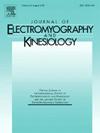NeuroMechanics: Electrophysiological and computational methods to accurately estimate the neural drive to muscles in humans in vivo
Abstract
The ultimate neural signal for muscle control is the neural drive sent from the spinal cord to muscles. This neural signal comprises the ensemble of action potentials discharged by the active spinal motoneurons, which is transmitted to the innervated muscle fibres to generate forces. Accurately estimating the neural drive to muscles in humans in vivo is challenging since it requires the identification of the activity of a sample of motor units (MUs) that is representative of the active MU population. Current electrophysiological recordings usually fail in this task by identifying small MU samples with over-representation of higher-threshold with respect to lower-threshold MUs. Here, we describe recent advances in electrophysiological methods that allow the identification of more representative samples of greater numbers of MUs than previously possible. This is obtained with large and very dense arrays of electromyographic electrodes. Moreover, recently developed computational methods of data augmentation further extend experimental MU samples to infer the activity of the full MU pool. In conclusion, the combination of new electrode technologies and computational modelling allows for an accurate estimate of the neural drive to muscles and opens new perspectives in the study of the neural control of movement and in neural interfacing.

 求助内容:
求助内容: 应助结果提醒方式:
应助结果提醒方式:


